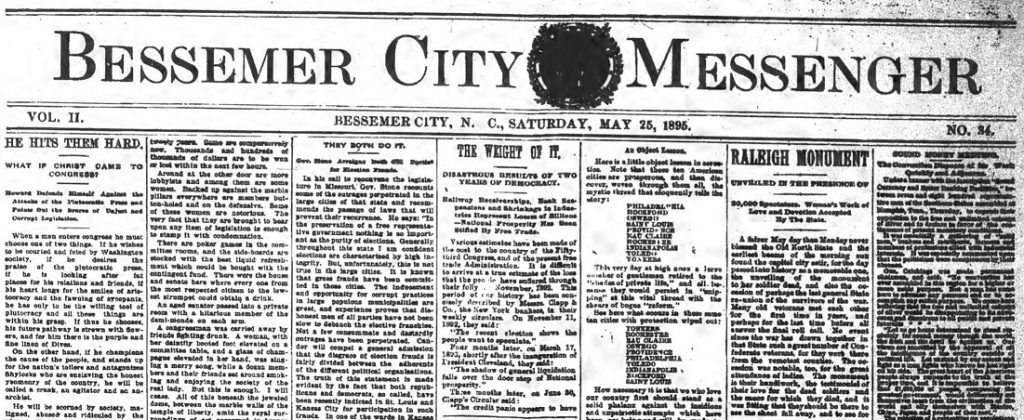
Front page of the Bessemer City Messenger, dated May 25, 1895.
An issue of the Bessemer City Messenger has been newly digitized and added to DigitalNC. The issue is date May 25, 1895, making the Messenger one of the oldest newspapers we have on file. Unfortunately, not much else is known about this newspaper, including when it began or when it ended. This 1895 issue is only the second instance of the Messenger being preserved to this day. The only other copy of any issue known to exist is an 1892 edition held in the State Library of North Carolina in Raleigh, N.C.

Published out of Bessemer City, the Messenger served the residents of Gaston County during its circulation. Its articles take a distinctly Populist stance, celebrating Populist Party victories throughout the country in the early 1890s, while also arguing for greater distribution of wealth among workers and increased living conditions for children and women. A number of articles are also dedicated to trade protection, wheat production, manufacturing, and tariffs. For example, the article on the right is dedicated to the rapid expansion of cotton production mills in the South, with North Carolina being a particular spot for growth. While there were some notices of local events and local news among Gaston County and nearby towns in Cleveland County, the majority of this paper’s articles were dedicated to national or international events, creating an interesting dynamic when compared to other North Carolina papers of the time on our site.
Having the Bessemer City Messenger added to our collection is an invaluable resource when it comes to learning about the lives of North Carolinians in the late 1800s.
We are one of 29 finalists for the Institute of Museum and Library Services 2018 National Medal for Museum and Library Service. Now through April 13, IMLS is asking the people who have been impacted by the Digital Heritage Center to share their stories. If you have a story you’d like to share, we’d love to hear from you! Please contact us or share via social media by tagging us on Facebook (@NC Digital Heritage Center) or on Twitter (@ncdhc).
Today’s story comes from Professor Robert C. Allen, Professor in the Department of American Studies at UNC-Chapel Hill and faculty lead of the Community Histories Workshop. Dr. Allen shared the thoughts below in support of our Medal application and we reshare them today with his permission.
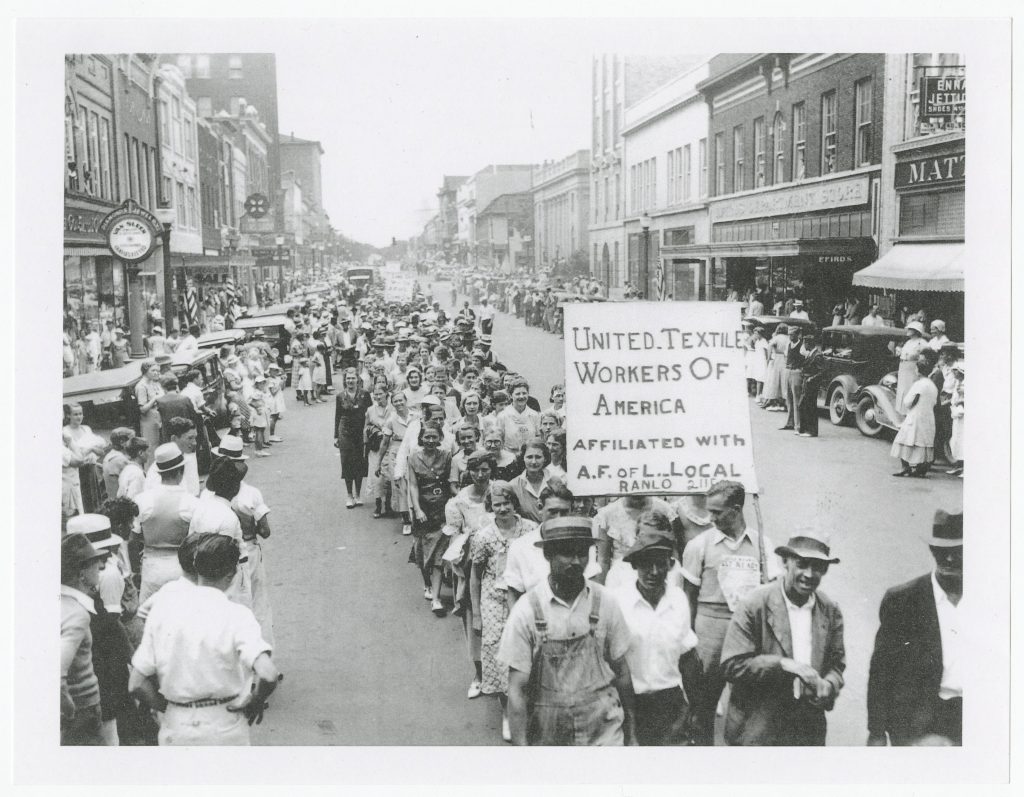
Textile Workers Marching in Gastonia, NC, 1929. From the Gaston County Museum of Art & History
“Since 2013, I have been working closely with the N.C. Digital Heritage Center on ‘Digital Loray,’ the most ambitious public humanities program ever undertaken by UNC. This project uses the adaptive reuse of an iconic industrial structure—in this case, Gastonia’s Loray Mill, one of the largest cotton mills built in the state—as a catalyst for a long-term community history and archiving initiative. The ‘heart of this open-ended project is an archive of more than 2500 digital objects, brought together in a single interface from the UNC North Carolina Collection and other Wilson Library collections, other institutional archives, community cultural heritage organizations, churches, and individual community contributors.
“The NC Digital Heritage Center was absolutely instrumental in our ability to undertake this kind of deeply collaborative community history work. It worked with the Gaston County Museum of Art and History—the primary cultural heritage organization in the county—to identify, digitize, and publish material from its collection that could be ‘added’ to Digital Loray. Three community members had saved many documents, photographs, maps, mementos, and other material from the mill at the time of its closing in 1993. Working with the N.C. Digital Heritage Center, we encouraged them to donate this material to the Gaston County Museum of Art and History, which, in turn, allowed the center to facilitate the digitization and publication of these unique artifacts…
“In short, I could not extend my teaching, graduate training, and the work of my unit into communities in North Carolina without the invaluable assistance of the N.C. Digital Heritage Center. But I am not the most important beneficiary of its effectiveness and leadership: it enables hundreds of small museums, public libraries, historical societies, and other cultural heritage organizations to add a digital dimension to their work and, in doing so, to preserve and share the histories of their communities. These perennially threatened local organizations can undertake what otherwise would be impossibly expensive and technically complex digitization projects without the need for technical specialists or third-party software and hosting solutions.
“The N.C. Digital Heritage Center should be a model for other states. It deserves much more attention on a national level than it has received, particularly in the realms of public history, digital history, public humanities, and digital humanities. I have reviewed and attended presentations about ‘sexier’ and much better resourced projects over the past few years, but none I think has had a greater or longer-lasting impact than the quiet but profoundly important work of my colleagues in the N.C. Digital Heritage Center. I congratulate them and thank them for all they do to make my university a great resource for the people of North Carolina.
We were excited this past semester to partner with the AMST 475H, Documenting Communities class here at UNC to show them how a digitization project works from star to finish. This is a guest post from the class.
Written by: Dani Callahan and Lucas Kelley
New material that documents the unionization of the Gastonia’s Firestone Mill have been added to DigitalNC’s existing collection on the mill: the Loray Digital Archive. The Gaston County Museum of Art and History provided the materials for digitization, and UNC-Chapel Hill students in Professor Robert Allen’s Documenting Communities course scanned the material, researched the unionization movement, and added metadata to the documents.
The unionization of the Firestone Mill occurred in the late 1980s and was particularly contentious both within the mill community and throughout the region. The violent unionization efforts of the 1920s, exemplified in the Loray strike of 1929, had left deep wounds within Gastonia, and area residents and workers had traditionally distrusted subsequent unionization attempts. The widespread economic downturn in the textile industry in the 1980s, however, meant harsher conditions and less pay for the workers at Firestone, and some workers hoped the United Rubber Workers Union could provide protection from the difficult economic climate.
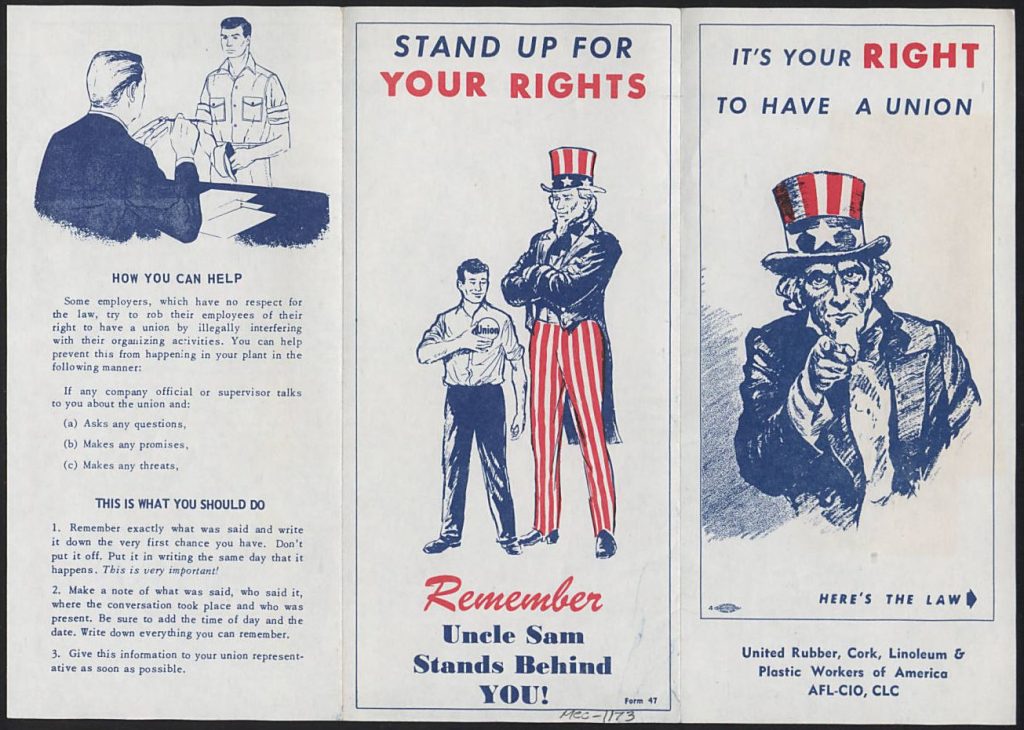
Pro-union pamphlet distributed to employees at Firestone Mill in the late 1980s. It was produced by the AFL-CIO.
The materials added to the Loray Digital Archive document the pro-union and anti-union campaigns. Each side sought to attract workers to their cause with flyers, posters, stickers, buttons, and pamphlets. Initially, the anti-union forces held off the unionization attempt in 1987. Widespread media coverage turned the referendum into a political circus and leaders of the pro-union movement could not overcome area residents’ distrust. Yet a year later, Firestone workers voted to join the union in a campaign that was much more subdued. The success of pro-union forces was due in large part to the diligence of the union’s committee members working inside the mill. While the 1987 vote had turned into a regional and even national media circus, the 1988 vote remained an internal debate housed within Firestone itself. When the workers at the Firestone Mill voted on April 14th, 1988 to join the United Rubber, Cork, Linoleum and Plastic Workers by a narrow margin, it was a victory nearly sixty years in the making. Click the link view all the materials from the 1980s union effort.

Carolina Baptist newspaper masthead from September 2, 1857.
Thanks to our partner, Wake Forest University, there are 19 new newspapers added to DigitalNC. Dating from 1857 to 1925, these newspapers were written for Christian communities from the mountains to the Piedmont to the coast of North Carolina.
Most of the newspapers are affiliated with the Baptist denomination, and their audiences vary in size and geography. Some were published for specific churches, like the Broad Street Worker “Devoted to the interests of Broad St. Baptist Church” in Winston, N.C. Others were published for a wider audience by regional, state, or national organizations, like the North Carolina Baptist Missionary Worker and The Gospel Herald published by the Boards of the Baptist State Convention, and the Conflict published by the Anti-Evolution League of America.
To look through the 58 issues of these publications, click the links below:
- The Atlantic Messenger (New Bern, N.C.)
- The Baptist Messenger (Newton, N.C.)
- The Baptist Messenger (Wingate, N.C.)
- The Baptist Sunday School Monthly (Henderson, N.C.)
- The Baptist Worker (Gastonia, N.C.)
- The Blue Ridge Baptist (North Wilkesboro, N.C.)
- The Broad Street Worker (Winston, N.C.)
- Carolina Baptist (Hendersonville, N.C.)
- The Central Messenger (Wake Forest, N.C.)
- The Conflict (Memphis, Tenn.)
- Gaston County Baptist Messenger (Gastonia, N.C.)
- The Gospel Herald (Raleigh, N.C.)
- The Helper (Wilmington, N.C.)
- North Carolina Baptist Missionary Worker (Raleigh, N.C.)
- North Carolina Baptist Sunday School Chautauquan (Raleigh, N.C.)
- Southwide Baptist News and Ridgecrest Reporter (Marshall, N.C.)
- The Stanly Baptist (Big Lick, N.C.)
- The Vance County Union (Henderson, N.C.)
- West Chowan Baptist Messenger (Winton, N.C.)
To see other materials from Wake Forest University, visit their partner page or their website.
Here at the Digital Heritage Center, we’re able to scan or photograph almost all kinds of two dimensional items and even a goodly number of those in three dimensions. However, audiovisual materials are sent off site for digitization to a vendor and, as such, it’s a service we’ve only been able to offer annually. We just concluded our second round of audiovisual digitization and, like last year, our partners came forward with a wide variety of film and audio nominations documenting North Carolina’s history. This is the first in a series of posts about the accepted nominations, with links to the items in the Sights and Sounds collection.
Belmont Abbey College
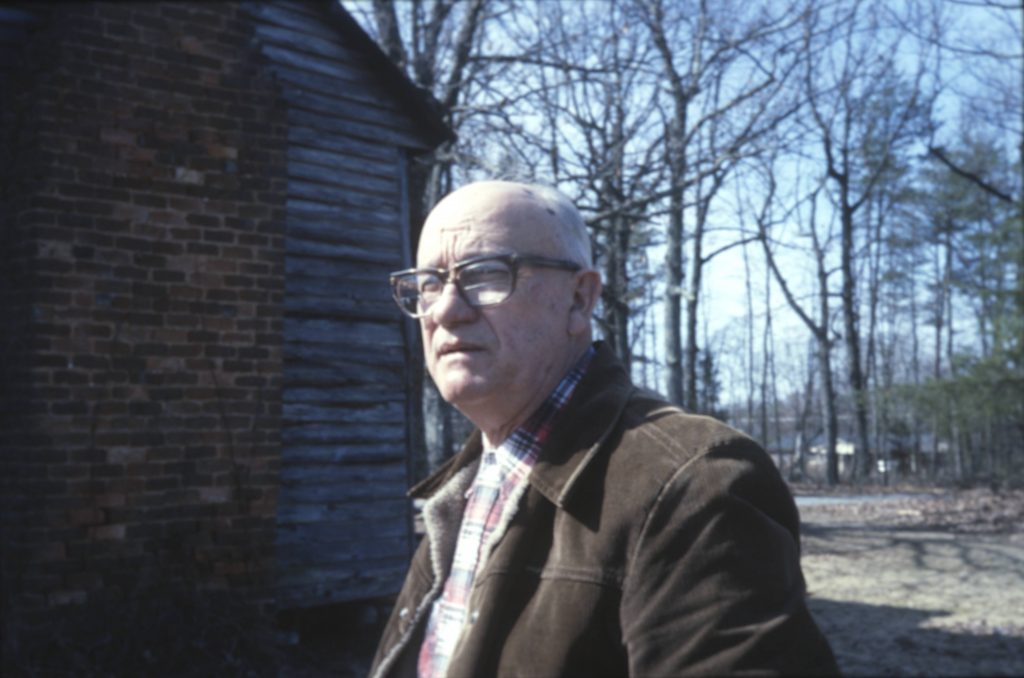
Unidentified man, presumably from Gaston County and interviewed for the Crafted with Pride Project in 1985.
The “Crafted with Pride” project, led by several cultural heritage institutions and businesses in Gaston County in 1985, sought to record and bring public awareness to the textile industry’s impact in Gaston County. During the project, a number of oral histories were collected from those who had worked in textile mills and lived in mill villages in towns like Belmont, Bessemer City, Cherryville, Dallas, Gastonia, High Shoals, McAdenville, Mount Holly, and Stanley. Belmont Abbey College has shared these oral histories on DigitalNC, as well as images and documents from the project. The oral histories touch on the toil of mill work, especially during the Great Depression, and the positive and negative cultural and social aspects of mill villages in North Carolina during the early 20th century.
Cumberland County Public Library
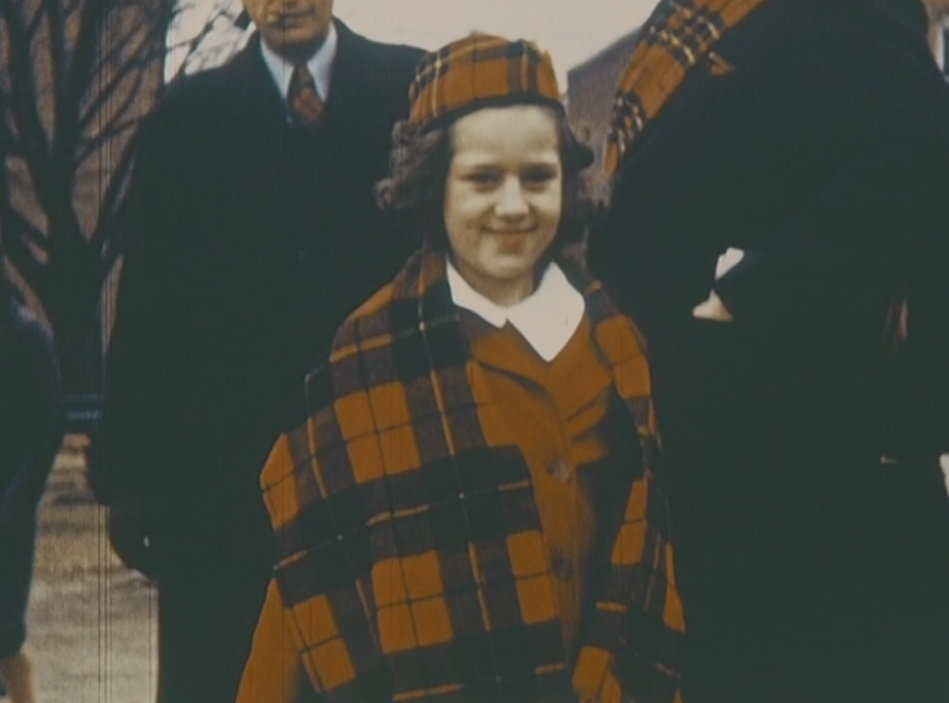
An unidentified girl wearing tartans at festivities surrounding Cumberland County’s Sesquicentennial in 1939.
Silent footage of the 1939 sesquicentennial parade in Fayetteville, N.C. combines Scottish customs, local history, and military displays from Cumberland County. This film was nominated by the Cumberland County Public Library, along with a brief advertisement soliciting support for renovation of Fayetteville’s Market House.
Duke University Medical Center Archives
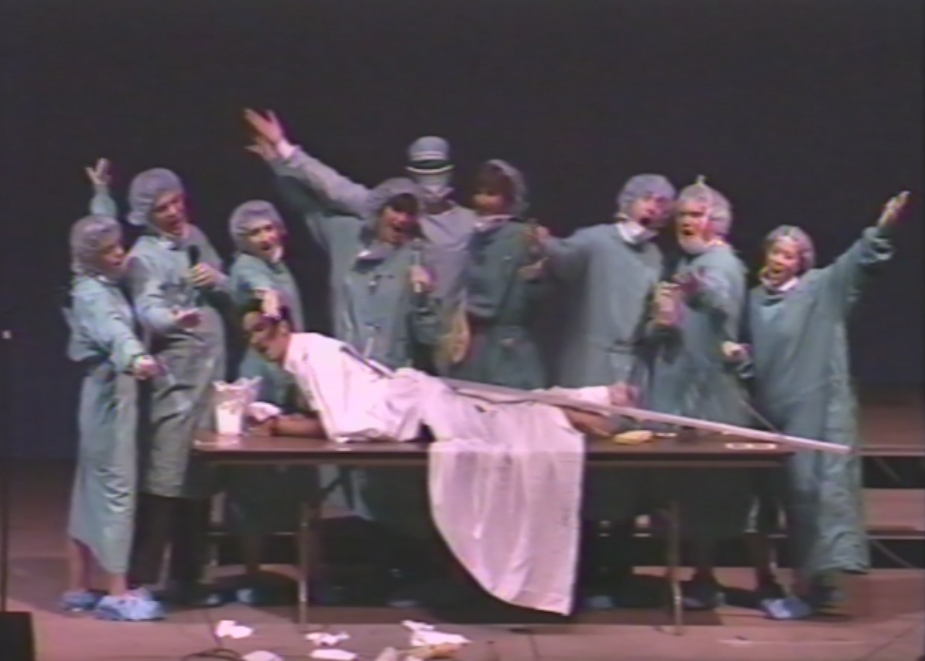
Scene from “The Sound of Mucus,” performed by Duke Medical School students in 1989.
The films and oral histories nominated by the Duke University Medical Center Archives describe the history of Duke Hospital and Duke University’s School of Medicine. Included is a Black History Month Lecture by Dr. Charles Johnson, the first Black professor at Duke Medicine, in which he describes his early life and his work at Duke. You can also view “The Sound of Mucus,” a comedic musical created and performed by Duke Medical students and faculty in 1989. Two interviews conducted with Wilburt Cornell Davison and Jane Elchlepp give first hand accounts of Duke Hospital and Medical School history.
We’ll be posting several more blog posts in the coming weeks which will introduce the other films from our partners now viewable on DigitalNC.
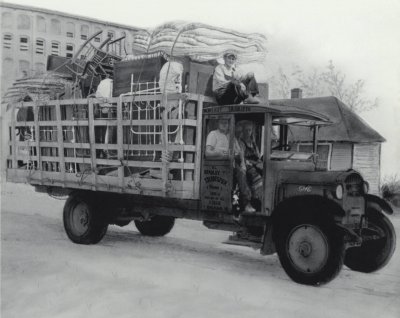
Moving Truck Transferring Family Possessions, from the Gaston County Museum of Art & History
The Digital Heritage Center does a lot of scanning on some really versatile machines. It’s one of the practical sides to our mission, and we take pride in being able to provide that service.
What is perhaps less well known is that we also help cultural heritage institutions publish items they’ve scanned themselves. Many cultural heritage institutions have flatbed or book scanners as well as willing staff and volunteers, but lack the technical infrastructure to host those scans for the public.
We’ve helped institutions …
- who needed to migrate from ailing databases or systems they can no longer support,
- who wanted to be able to full-text search their materials, a function they couldn’t fulfill through their current website,
- who offered their digital files to on-site users, but who were seeking a broader audience.
When we start this conversation, here are some of the questions we ask:
- Tell us about the original physical objects* – does your institution still have them? are there any rights or privacy concerns to sharing these online? what kind of subject matter is represented?
- Tell us about the digital files – who originally created them? how many are there? where do they live? what file types? how are they organized? is this an ongoing project? do you have any metadata already?
If the files are a good fit for DigitalNC, they get transferred to hard drives, metadata is created or amended, and items appear on the site alongside the scans we create here at the Center. If you work at a cultural heritage institution eligible to work with the Center, have or are currently creating scans, and are interested in adding these to DigitalNC, contact us. We may be able to give them a home.
* If there were any. We can help with born-digital items as well.
The following newspapers were digitized from microfilm in 2011 and 2012.
| Title |
Years |
Nominating Institution |
| The Mebane Leader |
1911-1915 |
Alamance County Public Library |
| Highland Messenger (Asheville) |
1840-1851 |
Buncombe County Public Library |
| The Standard (Concord) |
1888-1898 |
Cabarrus County Public Library |
| Daily Concord Standard |
1895-1899 |
Cabarrus County Public Library |
| Mecklenburg Jeffersonian (Charlotte) |
1841-1849 |
Charlotte Mecklenburg Library |
| Miners’ and Farmers’ Journal (Charlotte) |
1830-1834 |
Charlotte Mecklenburg Library |
| Catawba Journal (Charlotte) |
1824-1828 |
Charlotte Mecklenburg Library |
| Western Democrat (Charlotte) |
1856-1868 |
Charlotte Mecklenburg Library |
| North Carolina Whig (Charlotte) |
1852-1863 |
Charlotte Mecklenburg Library |
| Fayetteville Observer |
1851-1865 |
Cumberland County Public Library |
| The Carolina Times (Durham) |
1951-1964 |
Durham County Library |
| The Lincoln Republican (Lincolnton) |
1840-1842 |
Gaston County Public Library |
| The Lincoln Courier (Lincolnton) |
1845-1895 |
Gaston County Public Library |
| The Roanoke News (Weldon) |
1878-1922 |
Halifax County Public Library |
| The Marion Progress |
1916, 1929, 1940 |
McDowell County Public Library |
| Marion Record |
1894-1895 |
McDowell County Public Library |
| Marion Messenger |
1896-1898 |
McDowell County Public Library |
| The Pilot (Southern Pines) |
1920-1945 |
Southern Pines Public Library |
| Sylvan Valley News |
1900-1911 |
Transylvania County Library |
| The Pinehurst Outlook |
1897-1923 |
The Tufts Archives |
| The Goldsboro Headlight |
1887-1903 |
Wayne County Public Library |
| The Elm City Elevator |
1902 |
Wilson County Public Library |
| The Wilson Advance |
1874-1899 |
Wilson County Public Library |









